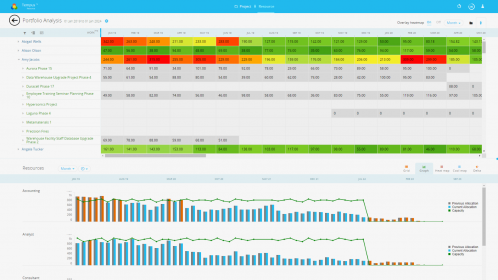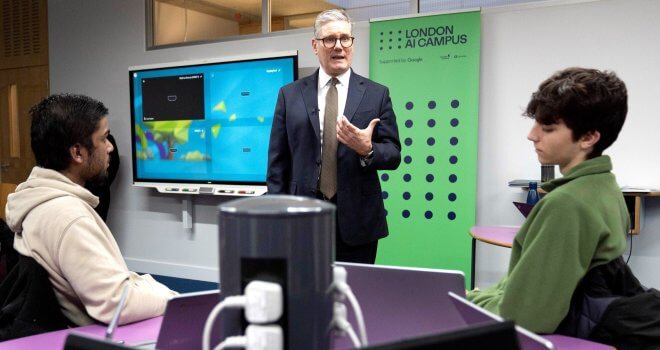Ramping Up PMO Resource Management To Combat Skills Shortages

In the face of widely reported skills shortages, how can project professionals efficiently deploy the right skills and people to resource the pipeline? PM Today’s Associate Editor, Amy Hatton, spoke to Greg Bailey, Vice President of Resource Management at ProSymmetry, to explore strategies to rise to the challenge.
For more insights register for the PM Today/ProSymmetry webinar, exploring Five Powerful, Practical Strategies to Adapt to Current Skills Shortages. June 30th, 2021.
February 2021 saw a new report from Gartner released, exposing the extent to which skills shortages are biting. The company’s TalentNeuronTM data reveals a complex landscape, with the skills required in any single role increasing by 10% year-on-year since 2017.
Whilst many organisations have turned to talent management strategies to combat the issue, the situation has been compounded by the COVID-19 global pandemic, with 75% of companies freezing hiring altogether.
The answer, we might think, is to seek necessary skills and talents internally to meet forthcoming demand. But gaining visibility across the skills pool is not as easy as it may first appear.
This reality permeates every sector and is something that Greg regularly discusses with ProSymmetry’s global client base. “Right now, many companies don’t have a fully visible repository across their employees’ skills and talents,” he says.
“They know they’ve got available people in house, but there is no way to quantify exactly what they can offer in terms of experience, proficiency, and so on. That impacts both on the ability to allocate resources internally, and on external contracting decisions.”
The issue extends beyond core skills and competencies into the question of human capital management, Greg continues. “As well as asking whether we have the right skills and certifications, we also need to ask, is that employee really engaged in performing that kind of work?
“What experience do they have in similar roles? How motivated are they to deliver their best performance? Fundamentally, are they the right person for this job? That’s something that most standard PPM tools simply don’t have the power to illustrate.”
In honesty, I’m surprised to hear a technology vendor speak so passionately about the ‘human’ side of business. Surely, this is just about matching the right job titles to the work? Not in Greg’s experience.
“At the moment, it’s typical for an organisation to have access to basic data like job title and day to day tasks. But the reality is that it’s an employee’s market. Everybody is competing for the right people to drive their business. As we race to establish post-pandemic recovery, it’s going to be the companies with engaged, motivated and creative employees that win out.
“So, the key question for organisations should be: ‘How do we do a better job of ensuring that the people working on the projects are not only skilled, but invested in the job they’re doing?’ It can be really tricky to get a handle on that.”
Add home and hybrid working to the mix and the picture becomes even more challenging. “The ‘work from anywhere’ model has seen many companies adding more governance and more process – not less,” says Greg.
“But, if we’re looking to empower Agile teams, we want staff to have a degree of flexibility and creativity. Yes, process needs to be involved to ensure effective delivery.
“But, at the same time, the pandemic has changed people’s expectations of what work can look like. The companies that meet those expectations are going to get ahead moving forwards.”

What’s more, Greg adds, when we think of productivity, more is not necessarily better. “We tend to assume that a heavy workload equals a productive workload. In my experience and the experience of hundreds of the companies ProSymmetry works with, that’s not the case.
“Think of a freeway or motorway, for example. If you have 95% traffic, the road is using its full capacity. But the traffic will easily become jammed precisely because volume is high. Now reduce that traffic to 75%. Yes, there is less resource on the road, but there is also freedom to move. It’s the same in the world of projects.
“When we allocate a lighter workload, we allow our people to get more work through the system because they’re not facing roadblocks. Plus, emergencies happen and priorities change. We must ensure we have space in the resource chain to accommodate those scenarios. It’s a tricky mindset shift, but one that is proving extremely effective for organisations willing to embrace it.”
In the face of these complexities, it seems extraordinary that a recent informal survey by ProSymmetry of 170 companies showed that 66% were still using spreadsheets to manage their resource planning.
“There’s an appetite out there for a more sophisticated approach.” Greg explains. “When you move into Resource Portfolio Management, several competencies come into play. The first is capacity planning – forecasting supply and demand. Then we need to consider skills – how do we evaluate our current skills pool? How do we fill the gaps? How do we forecast the skills needed in the future? How do we identify people with the personalities and capabilities to perform well as a team?
“It’s about encouraging Agility, but in alignment with the strategic goals of the business. To do this, the PMO must not just say ‘hey, I need a project manager’, but extend the proposition to say: ‘I need a project manager with these skills, these certifications, this level of experience and motivation, and these personality traits, so that they can slot right into the team I’m building’.”
Far from being a ‘soft’ approach, Greg says, this people-centric focus is a sharp business tactic.
“In organisational planning, it’s people that are the largest cost. If you’re not planning your human resources into the pipeline properly, you’re going to face a real challenge in delivering the work efficiently. And you know, it really isn’t complicated to achieve solid returns with Resource Portfolio Management. I would advocate a broad-brush approach initially.
“Start by mapping generic roles. Then you can refine that to understand the resources you have and, crucially, where the bottlenecks might occur. That’s what starts to inform your decisions. Do we swap people out and reallocate them internally? Do we recruit to fill the gaps? As you perform that sort of analysis (which, with the right technology, can be done in real-time) that’s where you get into the detail of matching the right person to the right role.
“It’s an iterative process. The ability to model different scenarios at the touch of a button is really powerful. Our clients are delivering up to 55% more projects successfully across massive portfolios using this approach. It’s all about serving up insightful data in an accessible way, so that we can start to get some predictability into both current and future portfolio plans.”
Find out more:
Register for PM Today’s forthcoming webinar with ProSymmetry:
Resource Management: Five Powerful, Practical Strategies to Adapt to Current Skills Shortages
Visit ProSymmetry.com for extensive resources and thought leadership, as well as practical demos of tools you can use to explore Enterprise Resource Management.




